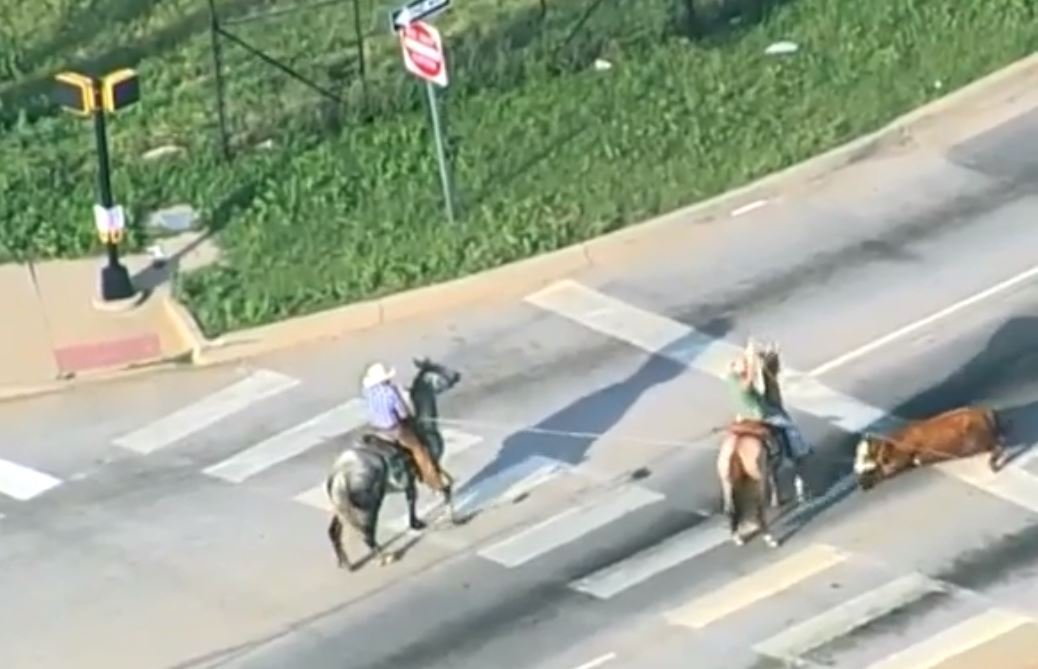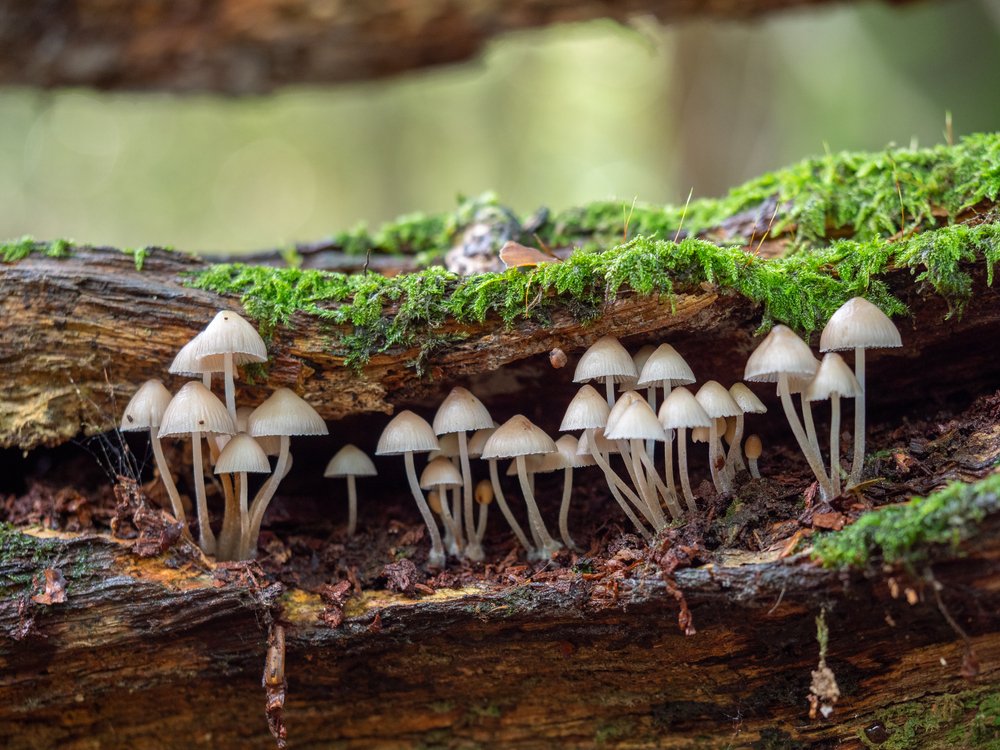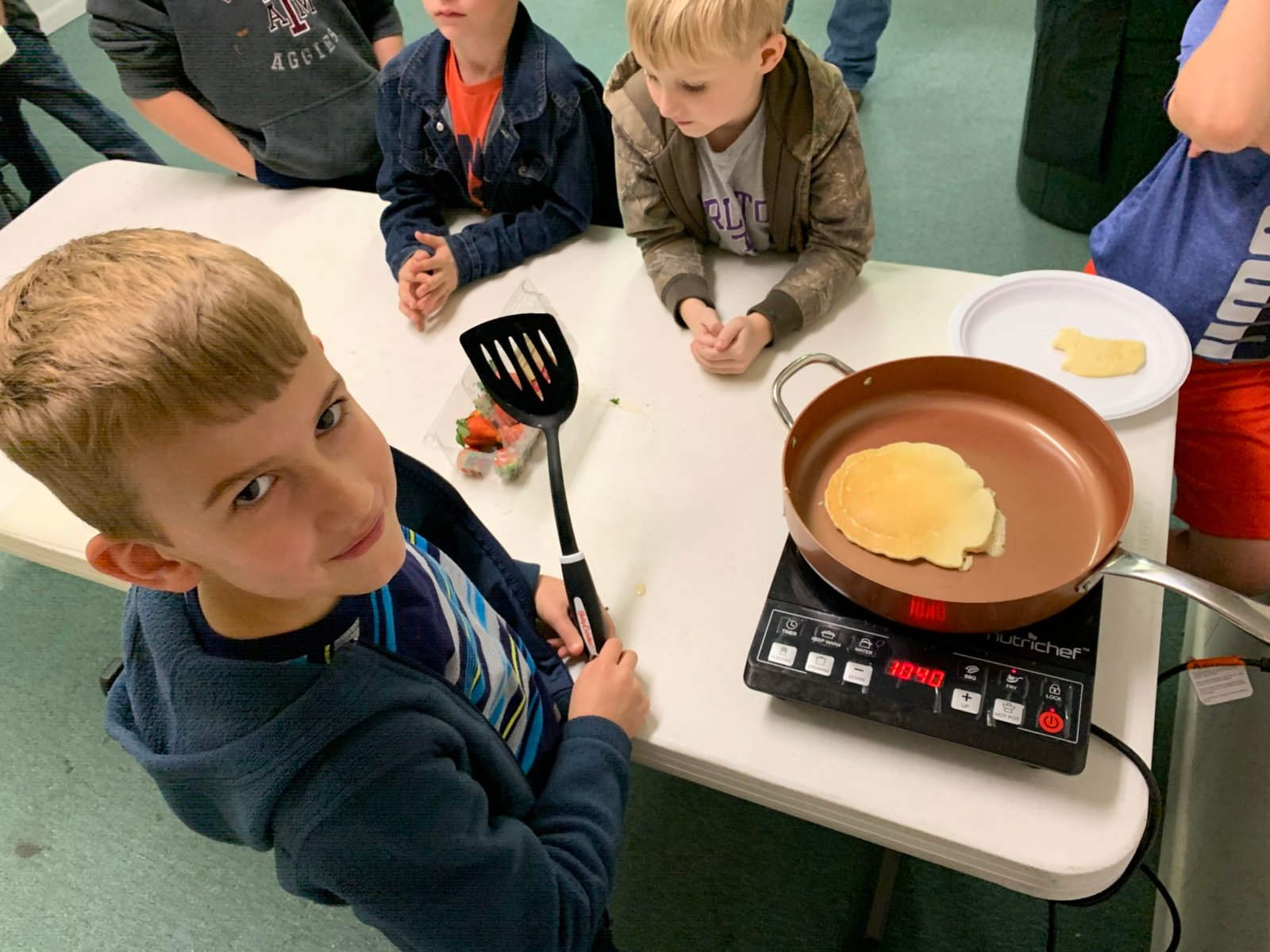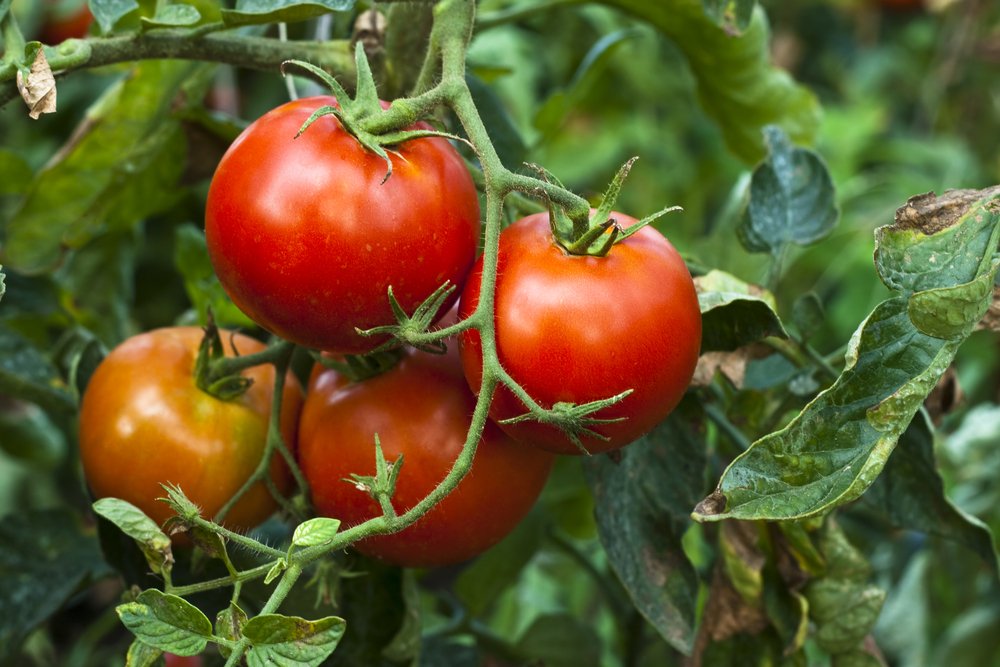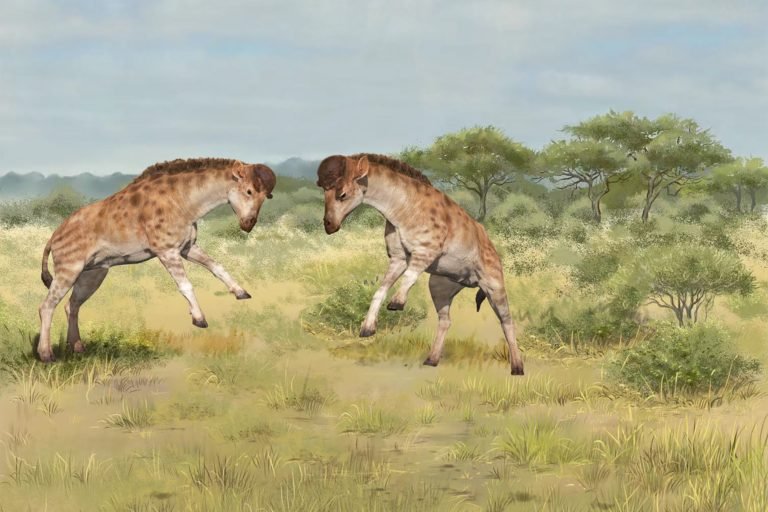For Karen Ridges, the choice was clear. “You’re asking me not to do a chore that I hate anyway for a whole month? And, in the process, it’s something small that might help the insects in the ecosystem. It seemed like a no-brainer,” Ridges says of the first time she learned about No Mow May. The movement encourages homeowners to refrain from cutting their lawn for the entire month of May in order to help pollinators find food in the form of early flowering plants and weeds that pop up among the grass.
Ridges was immediately intrigued, and she took a look around her Illinois community to see if anyone was organizing a local campaign. When she couldn’t find anywhere to turn, she started her own group. The No Mow May Illinois Facebook page started gaining members, who turned to Ridges and each other for advice and tips. One request that kept popping up was for a sign, something to display on an unmowed lawn explaining why the homeowner was letting the grass grow. There are free printable sign templates like this available online, but with the color printing involved, the printing estimates were too costly. Instead, Ridges and her husband designed their own black and white signs, collected money from the interested participants and drove around their community handing them out.
RELATED: The Best Plants to Attract Pollinators, by Region
“There’s been far more interest than I expected. I thought people would want to keep their nice manicured lawn, and we live in an area where people are really proud of that,” Ridges says. Instead, word of No Mow May and the signs spread—and kept growing. “It had a bit of a viral effect. If there were two people who wanted signs one day, there were four the next day.” Although it’s still a small percentage of her neighborhood, Ridges says the local effort took off in a surprising way.
No Mow May takes off
Since its start in 2019, No Mow May has grown in popularity—and especially so this year. The movement was launched by Plantlife, a British conservation charity. It grew roots in the US a couple of years ago when the city council in Appleton, Wisconsin suspended its mowing activities in May 2020. Now, the effort is supported by organizations such as Bee City USA, an arm of the nonprofit Xerces Society for Invertebrate Conservation. Bee City USA works to help communities protect local pollinators, including more than 3,600 species of bees native to America.
Pollinators, who after a long, cold winter are on the hunt for food in early spring, are responsible for one in every three bites of food. “That is extremely essential to our survival. And based on international research, up to 40 percent of pollinator species on Earth may be at risk of extinction in the coming years from habitat loss,” says Laura Rost, Bee City USA co-ordinator.
Photo by Matthew Shepherd.
Rost says No Mow May helps plenty of bee species (and other pollinators) seeking food sources at a crucial time. She hopes the movement will help people incorporate other bee-friendly tools into their lives. “We hope that it sparks a conversation and allows homeowners and communities to reconsider their practices and their local ordinances,” says Rost. “If [cities] realize that the negative impacts are minimal, they might consider softening their lawn ordinances year round, allowing for eight-inch lawns instead of four. So, this is testing the waters and an opportunity to try something that might be more pollinator friendly.”
What are lawns actually good for?
Does No Mow May actually work to protect and help pollinators? Yes and no, says Peter Landschoot, professor of turfgrass science at Penn State University. There can be real downsides to letting your grass grow wild, particularly in a month such as May. “That is a time when you get a lot of rapid growth in grasses and weeds. And if you don’t mow for the entire month, and then at the end of the month you mow again, you’re probably going to do a fair amount of damage to the grass,” he says.

Photo by Tippman98x, Shutterstock.
When it comes to lawn care, the rule of thumb is to never remove more than one third of the grass leaf at a time or you risk damaging the plant and thinning out your lawn. Landschoot says regular mowing actually stimulates new growth of grass, so it can improve the density of your lawn. Additionally, there could be other factors to worry about with long grass, such as pest control, fire hazards or just the esthetics and property values.
“The other aspect that I look at is function,” says Landschoot. “It keeps a short ground cover around the house so that you can walk over your property, you can have a barbecue out in the back and you can play badminton, you can get around and take care of your flowerbeds without stepping on other plants and causing damage. So, I look at that as kind of a functional aspect of the landscap,e too.” Turf grasses allow many Americans to have access to a green space that requires relatively minimal maintenance.
While there are grasses native to different regions in North America, the concept of a lawn is a product of colonialism. Early European colonists in the northeast found that pasture grasses didn’t grow in their new communities, and their animals died out after eating through the supply of native grasses such as annual ryes and marsh grass. Colonists began shipping over European grasses, including some that we might associate with America. That Kentucky bluegrass? It’s not from Kentucky. Those new-to-this-land grasses spread widely, and they now make up the majority of American lawns. And while the blades of grass might be small in size, they take up a lot of resources. Covering two percent of American land, lawns use more water than any agricultural crop. A 2005 study using NASA satellite images estimated at the time that lawns covered 49,000 square miles in the United States—roughly the size of Greece.
RELATED: Raising Cattle on Native Grasses Benefits Farmers, Wildlife and the Soil
Although lawns have come under fire recently for being monocultures, often of non-native plants, Landschoot says that’s not always the case. Typical lawn seed contains a mix of grass species, often perennial rye grass, Kentucky blue grass and fescue, a type of grass that grows well in shade and colder weather. And within those species, there can be multiple cultivars of grass. Even in grass seeds that exclusively focus on one species of grass, Landschoot says there can still be multiple cultivars, “so you might actually have eight different grasses in there.” That’s helpful in case a pest comes through or a particularly hot or cold spell. An issue with one species of grass may not impact the others, so your lawn won’t suffer as much.
Instead of refraining from mowing, Landschoot says a better way to help pollinators might be to focus on planting native plants instead. “I would do some research on what the best plants to put in your landscape to attract pollinators are, and then maybe develop beds or various plantings around your property to attract those pollinators, such as annuals and perennials,” he says. That’s also what Bee City USA recommends, if participants want to continue their initiative to help pollinators beyond No Mow May.
Reimagining the lawn
In Montreal, Jane Sorensen’s yard is filled with native plants, and she even expanded the green space to cover her driveway. Sorensen also advises other people who are interested in replacing their lawns with native plants and walks them through the process of reclaiming their greenery. “Up until the 1970s and 80s, having an asphalt and nice tar blacktop driveway was a status symbol. Then people started [using individual paving stones]. And now it’s like, actually, this is kind of overkill considering that there are environmental benefits to not doing this,” says Sorensen. “We just need more people who are willing to do it, and then people will start realizing that this is a third type of driveway, it’s not a signal of disuse.”
The biggest piece of advice Sorensen has for people who are interested in taking on a project like hers is to jump in and work with intentionality. While she says that her yard takes less work to manage than a traditional grass lawn, if neighbors aren’t used to what you’re doing, it can look a little eccentric. “That’s the biggest hurdle that people have to get over,” says Sorensen.

Photo by I.P. Visual Solutions, Shutterstock.
So, even though you’re letting things grow, make it clear that you know what you’re doing. Some manicuring or trimming will help or add in a personal touch in the garden such as a wind chime or garden gnome—anything that shows this is an intentional choice. “Nobody wants to have a neighbor that just neglects things to death,” says Sorenson. “But showing that you care is the biggest thing to getting it accepted by other people.”
Maryland resident Dan D’Eramo, who turned his front lawn into a vegetable garden, says that his yard is often a conversation-starter with his neighbors. Instead of traditional turf, he put up half a dozen raised beds, planting different crops each season depending on his mood. This year, the front yard garden is filled with a lot of peppers and other veggies that he plans to pickle and ferment.
While he gets a lot of use out of his garden, he does acknowledge that he’s a rarity in his community. “Just looking down my street, I see miles and miles of grass and shrubs and trees. And people put money and time and effort into maintaining those shrubs and grass and trees to look pretty,” D’Eramo says. “I personally think a well-kept, organized, balanced garden is also very pretty to look at.” Plus, he says, he also gets to eat the fruits of his labors.
RELATED: 4 Reasons to Plant a Vegetable Garden in the Front Yard
While he’s the only one in his neighborhood without a traditional front lawn, he still has folks coming up to him when he’s outside gardening, commenting on the plants he’s growing and the work it takes. He’s convinced a few people to grow a pepper plant or two in their own yards. “There’s a lot of wasted space out there, considering that we have a food shortage,” D’Eramo says. “We can combat the problems that we say we don’t have a solution for.”
For Karen Ridges in Illinois, No Mow May has had its ups and downs. Her efforts, while successful in motivating others to let their grass grow, did inspire a bit of backlash. “One woman said that she couldn’t do this because of ticks in the long grass,” Ridges recalls. Other people pushed back, claiming that she “was taking work away from landscapers.”
But, ultimately, participating in No Mow May has changed how Ridges relates to her lawn. She’s decided to have a landscape architect come to her property and help her plan out a space full of native plants and grasses such as prairie clovers, asters and wild bergamot. The transition will take some time, but Ridges says it’s as much for the pollinators as it is for her and her family. “The amount of rain in the Midwest that we’ve seen over the last five or 10 years, we have to do something different; otherwise, we’ll have to accept that our basements will become unusable,” she says. “We need plants that are water loving to help with the changes. Because the grass isn’t going to cut it.”
!function(f,b,e,v,n,t,s)
{if(f.fbq)return;n=f.fbq=function(){n.callMethod?
n.callMethod.apply(n,arguments):n.queue.push(arguments)};
if(!f._fbq)f._fbq=n;n.push=n;n.loaded=!0;n.version=’2.0′;
n.queue=[];t=b.createElement(e);t.async=!0;
t.src=v;s=b.getElementsByTagName(e)[0];
s.parentNode.insertBefore(t,s)}(window, document,’script’,
‘https://connect.facebook.net/en_US/fbevents.js’);
fbq(‘init’, ‘264217957779476’);
fbq(‘track’, ‘PageView’);


